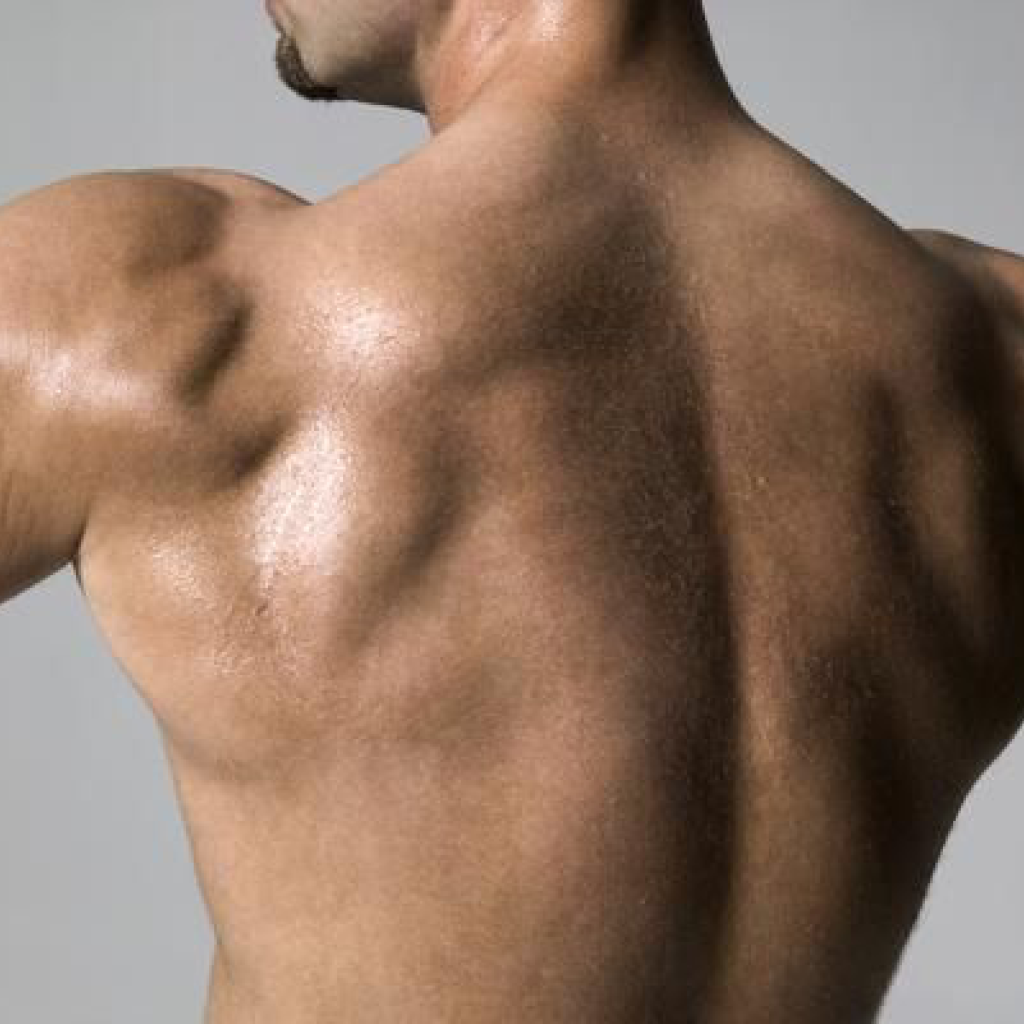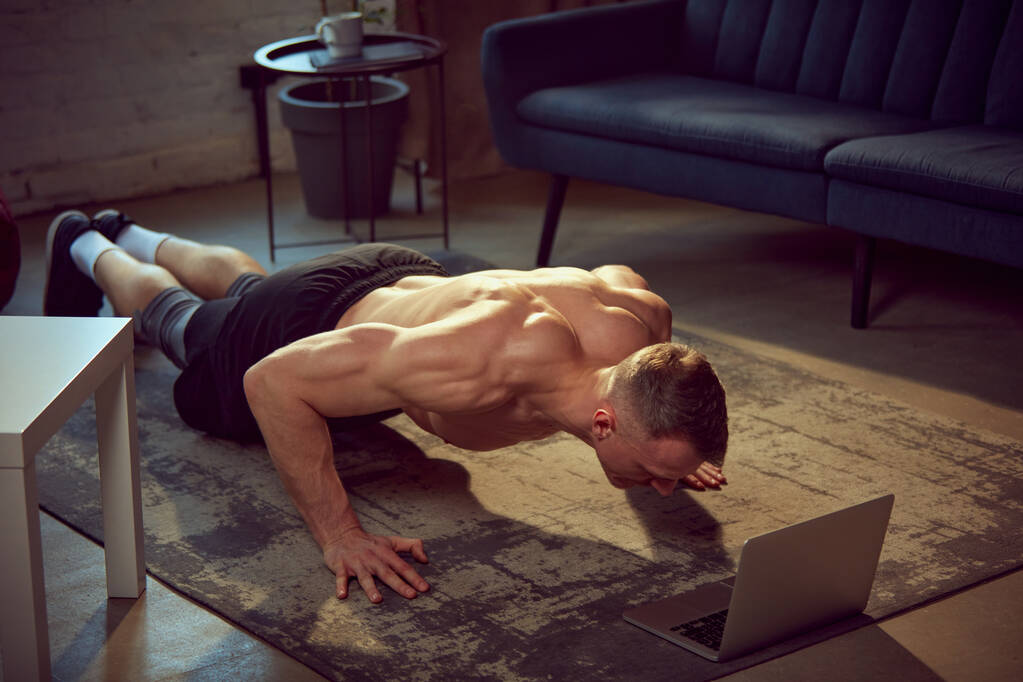Learn how to build strong and defined trap muscles with our comprehensive guide.
How to Build Trap Muscles: A Guide to Strengthening Your Trapezius Muscles
Looking to take your trap muscles to new heights? This guide will show you how to strengthen your trapezius muscles and achieve those eye-catching traps you’ve always wanted. Whether you’re a seasoned athlete or just starting out at the gym, understanding the fundamentals and incorporating effective exercises into your routine is key. So, let’s dive in and get those traps pumping!

Understanding Your Trapezius Muscles
Before we get into the nitty-gritty of trap muscle training, it’s essential to understand the anatomy and function of these powerful muscles. The trapezius muscles are located on the upper back, extending from the base of the skull down to the middle of the back. They play a crucial role in shoulder movement and stability.
The trapezius muscles, also known as the traps, are a pair of large triangular muscles that cover a significant portion of the upper back. They are named after their trapezoid shape. These muscles are among the most prominent muscles in the upper body and are easily visible when well-developed.
The traps are divided into three regions: the upper, middle, and lower traps. Each region has its own unique attachments and functions. The upper traps attach from the base of the skull to the middle of the shoulder blades. The middle traps span from the shoulder blades to the middle back, while the lower traps reach from the middle back to the lower spine.
The upper traps are responsible for elevating the shoulders, such as during shoulder shrugs. They also assist in neck extension, allowing you to tilt your head backward. The middle traps retract the shoulder blades, bringing them closer together. This movement is crucial for maintaining good posture and shoulder stability. The lower traps depress the shoulder blades, pulling them downward and helping to stabilize the shoulder joint.
Functionally, the trapezius muscles are involved in various movements, including shoulder shrugging, shoulder blade retraction, and neck extension. However, their importance extends beyond these specific actions. Strong and well-developed traps contribute to overall upper body strength and stability. They provide a solid foundation for performing exercises that involve the shoulders, such as overhead presses, pull-ups, and bench presses.
In addition to their role in movement and stability, the trapezius muscles also have an aesthetic appeal. Well-developed traps can give the upper back a more defined and muscular appearance. They are often considered a symbol of strength and power.
Now that you have a better understanding of the anatomy and function of the trapezius muscles, you can approach trap muscle training with more knowledge and confidence. By targeting these muscles through specific exercises and proper form, you can strengthen and develop your traps, improving both your physical performance and your overall physique.
Importance of Strong Trap Muscles
Now that you understand the basics of your trap muscles, let’s explore why it’s important to have strong traps in your fitness arsenal.
The trapezius muscle, commonly referred to as the traps, is a large muscle located on the upper back and neck. It is shaped like a trapezoid, hence its name. While many people focus on building their chest, arms, and abs, neglecting the traps can be a big mistake. The traps play a crucial role in maintaining good posture, providing stability to the shoulders, and contributing to upper body strength.
Benefits of Strengthening Your Traps
Building strong trap muscles offers a range of benefits. Not only will you improve your overall posture and shoulder stability, but you’ll also enhance your upper body strength. Strong traps can assist in exercises like bench presses, overhead presses, and pull-ups, translating into improved performance in various sports and activities.
When your traps are strong, they help to keep your shoulders in the correct position, preventing them from rolling forward. This can alleviate shoulder pain and reduce the risk of injuries, such as rotator cuff tears. Additionally, strong traps provide a solid foundation for other upper body exercises, allowing you to lift heavier weights and perform movements with better form.
Another advantage of having well-developed traps is improved athletic performance. Whether you’re an athlete participating in sports like basketball, volleyball, or swimming, or simply enjoy recreational activities such as rock climbing or hiking, strong traps will give you an edge. They contribute to better shoulder mobility, allowing you to generate more power and efficiency in your movements.
Risks of Neglecting Your Trap Muscles
On the flip side, neglecting your trap muscles can lead to imbalances and poor muscle recruitment. This can result in shoulder pain, limited range of motion, and even potential injuries. When the traps are weak, other muscles in the upper body, such as the chest and front deltoids, may become overactive and take over the workload. This imbalance can lead to rounded shoulders, a forward head posture, and increased stress on the neck and upper back.
Furthermore, weak traps can hinder your performance in various exercises. For example, during a bench press, strong traps help to stabilize the shoulder blades, allowing for a more efficient transfer of force from the chest and triceps. If your traps are weak, you may struggle to maintain proper form and lift heavier weights, increasing the risk of injury.
By incorporating trap muscle exercises into your routine, you’ll mitigate the risks associated with neglecting these crucial muscle groups. Exercises like shrugs, upright rows, and farmer’s walks specifically target the traps and help to strengthen and develop them. It’s important to note that proper form and technique are essential when performing these exercises to maximize their effectiveness and minimize the risk of injury.
In conclusion, strong trap muscles are not only aesthetically pleasing but also play a vital role in maintaining good posture, shoulder stability, and overall upper body strength. By giving your traps the attention they deserve, you’ll reap the benefits of improved athletic performance, reduced risk of injuries, and enhanced functionality in your daily activities.
Essential Equipment for Building Trap Muscles
When it comes to building strong and defined trap muscles, having the right equipment is key. While fancy machinery may seem tempting, you’ll be surprised to know that a few essential tools can do the trick and help you achieve your desired results.
Free Weights and Barbells
One of the most effective ways to target and develop your trap muscles is by incorporating free weights into your training routine. Dumbbells and barbells are versatile and widely accessible, making them a staple in trap muscle training. These tools allow you to perform exercises like dumbbell shrugs and barbell upright rows, which specifically target the traps.
What sets free weights apart is the engagement of stabilizing muscles. When you use free weights, your body has to work harder to stabilize the weight, promoting overall strength development and enhancing the effectiveness of your trap exercises.
Resistance Bands and Cables
If you prefer a different approach or want to add variety to your trap routine, resistance bands and cables are excellent options. These tools offer versatility and convenience, allowing you to target your trap muscles from different angles and intensities.
Resistance bands provide constant tension throughout the range of motion, ensuring maximum muscle activation. This is particularly beneficial for trap exercises like resistance band pulls, where you can feel the burn with every rep. Similarly, cables offer a smooth and controlled resistance, allowing you to perform exercises like cable face pulls, which effectively engage the traps.
By incorporating resistance bands and cables into your training, you can add a new dimension to your trap workouts and challenge your muscles in unique ways.
Remember, the key to building strong and well-developed trap muscles is consistency and progressive overload. Whether you choose to use free weights, resistance bands, or a combination of both, make sure to gradually increase the weight or resistance over time to continue challenging your muscles and promoting growth.
Effective Exercises for Trap Muscles
Now that we have our equipment sorted, let’s explore some of the most effective exercises for building trap muscles.
Building strong and defined trap muscles not only enhances your overall physique but also improves your posture and upper body strength. Here are some exercises that specifically target the traps:
Shrugs and Their Variations
Shrugs are the go-to exercise for targeting the upper traps. Grab some dumbbells, start with your arms at your sides, and then elevate your shoulders as high as possible. This movement effectively engages the traps, giving them a powerful workout. For a twist, try seated shrugs, behind-the-back shrugs, or single-arm dumbbell shrugs to keep those traps guessing!
Seated shrugs are a great variation that allows you to isolate the traps even more. By sitting down, you eliminate the involvement of other muscles, forcing your traps to work harder. Behind-the-back shrugs target the traps from a different angle, activating different muscle fibers and promoting balanced development. Single-arm dumbbell shrugs are excellent for focusing on each trap individually, helping to correct any imbalances.
Upright Rows and Their Variations
Upright rows are excellent for targeting both the middle and upper traps. With a barbell or dumbbells, begin with your arms extended, palms facing your body, and pull the weight towards your chin. This exercise not only works the traps but also engages the deltoids and biceps, providing a comprehensive upper body workout. Experiment with close grip, wide grip, or even cable variations to keep the intensity high.
Close grip upright rows emphasize the middle traps, helping to build width and thickness in that area. Wide grip upright rows, on the other hand, target the upper traps more intensely, giving your shoulders a broader appearance. Cable variations, such as using a cable machine or resistance bands, provide constant tension throughout the movement, maximizing muscle activation.
Deadlifts and Their Variations
Deadlifts are known for building overall strength, but they also provide a fantastic opportunity to work your trap muscles. As you perform the lift, focus on retracting the shoulder blades and squeezing your traps at the top of the movement. This not only helps to protect your lower back but also ensures that your traps are fully engaged throughout the exercise. Conventional deadlifts, sumo deadlifts, and trap bar deadlifts are all great options.
Conventional deadlifts are a classic compound exercise that targets multiple muscle groups, including the traps. This exercise not only strengthens your traps but also your entire posterior chain, including your glutes, hamstrings, and lower back. Sumo deadlifts place more emphasis on the inner thighs and traps, making them an excellent variation for targeting those specific areas. Trap bar deadlifts, also known as hex bar deadlifts, are a great alternative that allows for a more upright posture, reducing stress on the lower back while still effectively working the traps.
Remember, when performing these exercises, it’s essential to maintain proper form and start with lighter weights before progressing to heavier loads. Always listen to your body and consult with a fitness professional if you have any concerns or questions.
Incorporating Trap Exercises into Your Routine
Now that you have a solid arsenal of trap-building exercises, it’s time to integrate them into your workout routine.

Creating a Balanced Workout Plan
Aim to incorporate trap exercises into your routine two to three times a week, ensuring proper rest and recovery between sessions. Remember, a balanced workout plan includes exercises for all muscle groups, so make sure to give ample attention to other muscle groups as well.
Recovery and Rest Days
Don’t forget the importance of rest! Your trap muscles, like any other muscle group, need time to recover and grow. Schedule rest days to allow your traps (and the rest of your body) to repair and rebuild. This will ensure better gains and reduce the risk of overuse injuries.
There you have it, a comprehensive guide to building trap muscles and adding strength to your upper body. Remember, consistency is key! With patience, dedication, and a playful attitude, you’ll be on your way to showcasing some serious traps in no time. So, grab those weights, embrace the burn, and give your traps the attention they deserve!








… [Trackback]
[…] Informations on that Topic: rogueroutines.com/how-to-build-trap-muscles-a-guide-to-strengthening-your-trapezius-muscles/ […]
… [Trackback]
[…] Read More Information here to that Topic: rogueroutines.com/how-to-build-trap-muscles-a-guide-to-strengthening-your-trapezius-muscles/ […]
… [Trackback]
[…] Read More on that Topic: rogueroutines.com/how-to-build-trap-muscles-a-guide-to-strengthening-your-trapezius-muscles/ […]
… [Trackback]
[…] Read More here to that Topic: rogueroutines.com/how-to-build-trap-muscles-a-guide-to-strengthening-your-trapezius-muscles/ […]
… [Trackback]
[…] Read More on on that Topic: rogueroutines.com/how-to-build-trap-muscles-a-guide-to-strengthening-your-trapezius-muscles/ […]
… [Trackback]
[…] Read More to that Topic: rogueroutines.com/how-to-build-trap-muscles-a-guide-to-strengthening-your-trapezius-muscles/ […]
… [Trackback]
[…] Read More on to that Topic: rogueroutines.com/how-to-build-trap-muscles-a-guide-to-strengthening-your-trapezius-muscles/ […]
… [Trackback]
[…] Read More Info here on that Topic: rogueroutines.com/how-to-build-trap-muscles-a-guide-to-strengthening-your-trapezius-muscles/ […]
… [Trackback]
[…] Info on that Topic: rogueroutines.com/how-to-build-trap-muscles-a-guide-to-strengthening-your-trapezius-muscles/ […]
… [Trackback]
[…] There you can find 21487 more Information on that Topic: rogueroutines.com/how-to-build-trap-muscles-a-guide-to-strengthening-your-trapezius-muscles/ […]
… [Trackback]
[…] Here you will find 54746 additional Information to that Topic: rogueroutines.com/how-to-build-trap-muscles-a-guide-to-strengthening-your-trapezius-muscles/ […]
… [Trackback]
[…] Here you will find 82898 more Information on that Topic: rogueroutines.com/how-to-build-trap-muscles-a-guide-to-strengthening-your-trapezius-muscles/ […]
… [Trackback]
[…] Information on that Topic: rogueroutines.com/how-to-build-trap-muscles-a-guide-to-strengthening-your-trapezius-muscles/ […]
… [Trackback]
[…] Read More to that Topic: rogueroutines.com/how-to-build-trap-muscles-a-guide-to-strengthening-your-trapezius-muscles/ […]
… [Trackback]
[…] Read More on to that Topic: rogueroutines.com/how-to-build-trap-muscles-a-guide-to-strengthening-your-trapezius-muscles/ […]